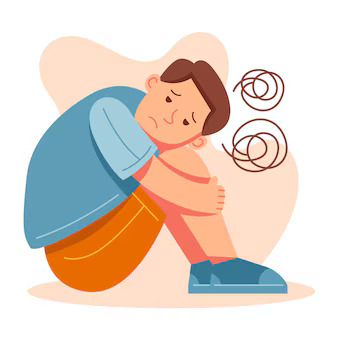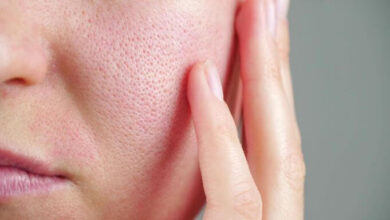Overcoming Adolescent Anxiety: Strategies for Success

The teenage years are a rollercoaster of emotions, but for some teens, anxiety takes the wheel. Adolescent anxiety is more than just normal worries about tests or fitting in. It’s a constant feeling of apprehension and fear that disrupts their daily lives. Physical symptoms like headaches and stomachaches can pop up, sleep might become elusive, and concentrating in school can feel impossible. Unlike normal anxieties, these worries become overwhelming and lead to social withdrawal, avoiding activities they used to enjoy, or feeling constantly on edge.
What are some examples of adolescent anxiety?
Adolescent anxiety can show itself in many ways. A teen might constantly worry about grades, friends, or fitting in. Social events or activities they once enjoyed could become overwhelming. Physical signs like headaches or stomachaches might appear for no reason. Some teens may avoid things that make them anxious, or even skip school to escape those worries.
What are the symptoms of Adolescent Anxiety?
If your child is struggling with adolescent anxiety, “Kid therapy” can provide the support and guidance needed to heal and overcome these challenges.
- Excessive Worry: Constant and excessive worrying about various aspects of life.
- Restlessness: Feeling restless or on edge, unable to relax.
- Fatigue: –— Extended periods of weariness or fatigue despite getting enough sleep.
- Irritability: Easily becoming irritated or agitated, even over minor issues.
- Muscle Tension: Physical tension or tightness in muscles, often accompanied by headaches or body aches.
- Difficulty Concentrating: Trouble focusing on tasks or schoolwork due to racing thoughts or worry.
- Sleep Problems: Difficulty falling asleep, staying asleep, or experiencing restless sleep.
- Rapid Heartbeat: Feeling like the heart is racing or pounding, even without physical exertion.
- Sweating: Experiencing excessive sweating, particularly in stressful situations.
- Shortness of Breath: Feeling breathless or having difficulty breathing, especially during anxiety-inducing situations.
- Nausea or Upset Stomach: Feeling nauseous, having stomachaches, or experiencing digestive issues due to anxiety.
- Dizziness or Lightheadedness: Feeling dizzy or lightheaded, especially when feeling anxious or stressed.
- Excessive Self-Consciousness: Constantly worrying about how one is perceived by others, leading to self-conscious behaviors.
- Avoidance Behavior: Avoiding situations or activities that trigger anxiety, such as social gatherings or public speaking.
- Panic Attacks: Sudden and intense episodes of fear or terror, often accompanied by physical symptoms like chest pain or sweating.
- Social Withdrawal: Withdrawing from social interactions or activities, preferring to be alone due to anxiety or fear of judgment.
It is advised to seek professional assistance if a teenager persistently exhibits many symptoms that interfere with day-to-day functioning since this might suggest the presence of an anxiety condition.
Strategies for Coping with Adolescent Anxiety?
For overcoming adolescent anxiety and fostering healthy child development, seeking professional help from a “Psychologist near me” is recommended for healing.
- Encourage Physical Activity: Regular exercise can help reduce anxiety levels by releasing endorphins and improving overall mood.
- Practice Deep Breathing Exercises: Teach adolescents simple breathing techniques to help calm their mind and body during moments of anxiety.
- Promote Adequate Sleep: Ensure adolescents get enough sleep each night, as sleep deprivation can exacerbate anxiety symptoms.
- Encourage Healthy Eating Habits: A balanced diet rich in fruits, vegetables, whole grains, and lean proteins can support mental well-being and reduce anxiety.
- Limit Caffeine and Sugar Intake: Both caffeine and sugar can contribute to increased anxiety levels, so it’s important to moderate consumption, especially among adolescents.
- Teach Mindfulness and Meditation: Mindfulness practices can help adolescents become more aware of their thoughts and emotions, reducing anxiety and stress.
- Provide Emotional Support: Offer a listening ear and validate adolescents’ feelings, letting them know it’s okay to experience anxiety and that they’re not alone.
- Encourage Positive Self-Talk: Teach adolescents to challenge negative thoughts and replace them with more positive and realistic self-talk.
- Create a Relaxation Space: Help adolescents create a calm and soothing environment at home where they can retreat when feeling anxious.
- Develop Coping Strategies: Work together to identify coping strategies that work best for the adolescent, such as journaling, drawing, or listening to music.
- Set Realistic Expectations: Help adolescents set achievable goals and encourage them to prioritize tasks to avoid feeling overwhelmed.
- Promote Healthy Boundaries: Teach adolescents to set boundaries with peers and to recognize when they need to step back from stressful situations.
- Seek Professional Help: If anxiety persists or significantly interferes with daily life, encourage adolescents to seek support from a mental health professional.
- Educate about Anxiety: Provide information about anxiety disorders and help adolescents understand the physiological and psychological aspects of anxiety.
- Foster Social Connections: Encourage adolescents to spend time with supportive friends and family members who can provide emotional support.
Conclusion
By implementing these strategies, adolescents can develop effective coping skills and resilience to better manage anxiety and lead healthier, happier lives.



